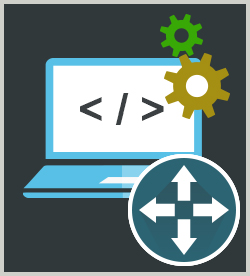IT Skills Software Design and Development Mobile Development Cross-Platform Development
Although React has no opinion about how routes are handled, and you can manually wire up routes in a React app. A much more coherent, configurable, and manageable approach is to use React Router, which was specifically designed for the task. Creating forms with validation and logic attached is a perennial challenge for web app developers. This course covers basic routing with React Router, and techniques for building reusable forms and form components.
| Objectives |
React Router - start the course
- configure routes in React Router
- configure a RouteHandler in React Router
- use params and querystrings for a component in React Router
- use the JSX link tag with React Router to reference routes
- configure a page for not found 404 errors in React Router
- configure redirects in React Router
- configure transitions between components and pages using the willTransitionTo and willTransitionFrom functions in React Router
- configure hash location and history location routing with React Router
- configure the built-in Router.Navigation mixin with React Router
React Forms - configure a basic form in React
- build a controller view for a form page in React
- build controlled form components in React
- create a reusable text input component
- consume a reusable text input component
- configure buttons in a React form
- configure redirects programmatically in React
- use the toastr library to configure simple toast notifications in a React application
- configure form validation in React
- configure PropTypes on components to enforce passed data types
- use transitions in a form to prevent form data loss when moving away from a form page
- configure form hydration using a URL in React
Practice: Forms and Routes - create a form and routes in React and React Router
|


